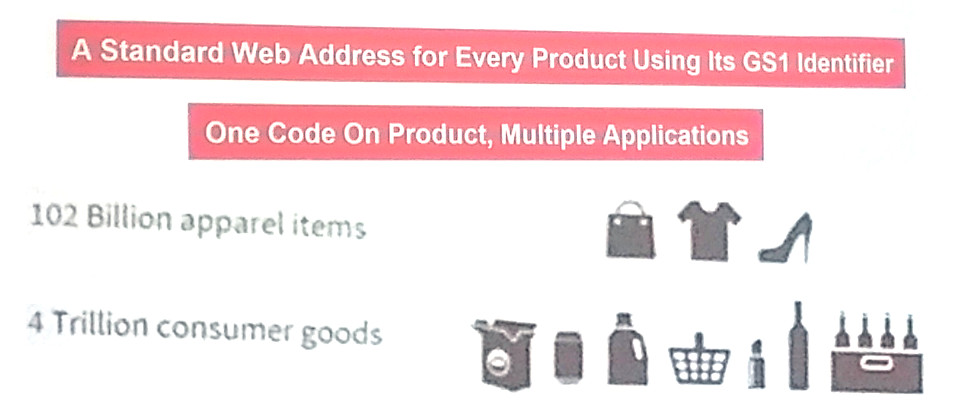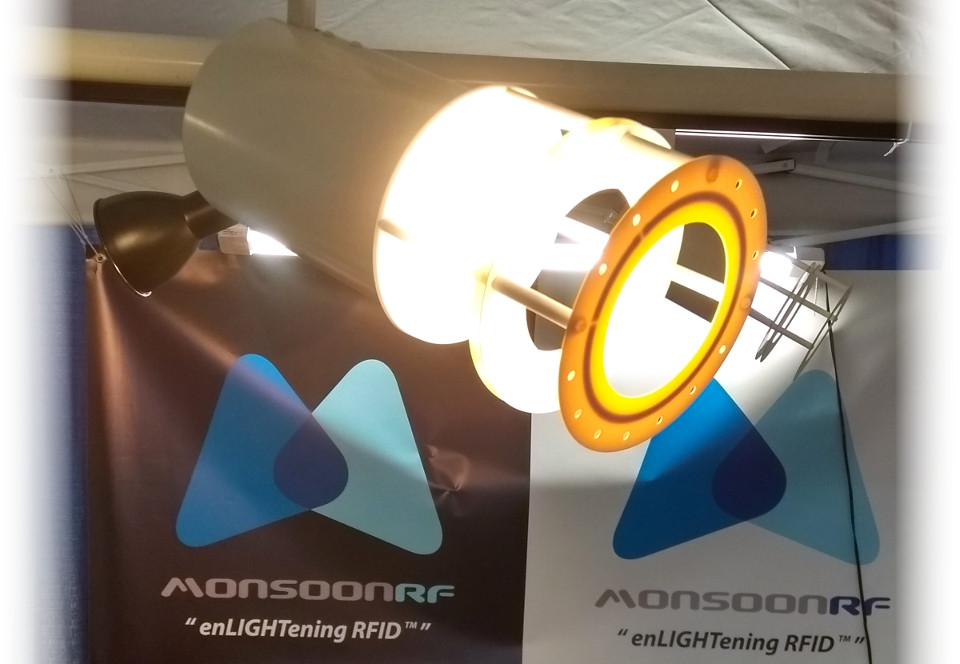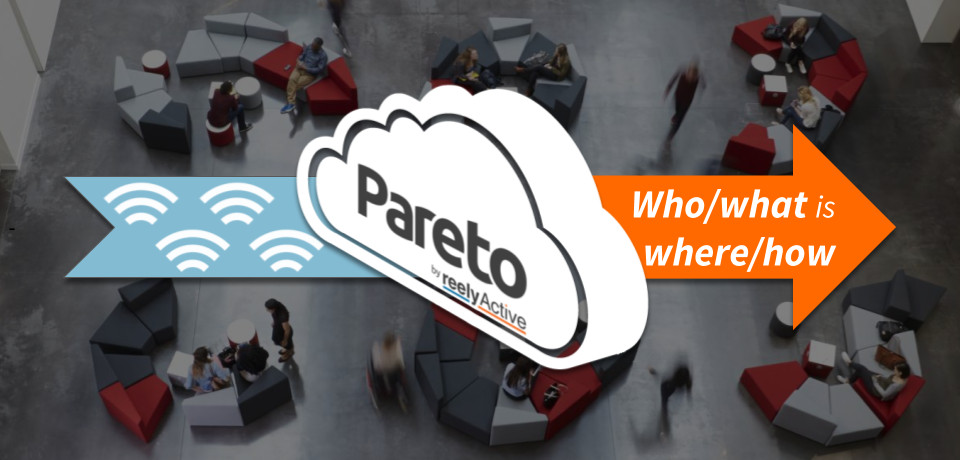Five years ago, reelyActive attended its first RFID Journal Live conference. Back then, we had pioneered simple, accessible cloud-connected active RFID. It’s easy to forget that in 2013 Bluetooth Low Energy (BLE) had not yet established itself as the de facto standard for active RFID, nor had the RAIN RFID alliance been formalised.
This past week we were back in Orlando for the industry’s largest event, now as world-leaders in BYOD RTLS. And for those like us who haven’t given up on the dream of pervasive RFID, of Kevin Ashton’s Internet of Things, and of ubiquitous machine-contextual awareness, there’s plenty to be excited about in the coming years!
Wiliot: indefinitely identifiaBLE consumer goods
What if the mobile phone in your pocket — and your connected appliances at home — could automatically recognise the consumer packaged goods (CPG) you own and use?

That’s just one of many potential applications when Wiliot‘s batteryless Bluetooth Low Energy (BLE) chip hits the market. By harvesting the 2.4GHz energy emitted by nearby WiFi & Bluetooth devices, and even microwave ovens, this chip will transmit periodic identification/status messages over a range of first meters, then, in a second generation, tens of meters.
Imagine the product lifecycle of, for instance, a sofa with this embedded chip. Its transit from factory to showroom is easily tracked and optimised. Not only can it be located in real-time on the showroom floor, shoppers can effortlessly retrieve information about the product on their smartphones. The connected home automatically recognises the sofa from delivery to disposal [enter your favourite smart home use cases here]. And, upon disposal, the material contents of the sofa can be automatically retrieved from the web, optimising recycling and reuse.
Never once in that process was there a battery to change/charge.
Technology such as this will be a key driver of the pervasive sharing economy (just add couch-surfing to the sofa example). And our platform is ready to recognise Wiliot’s chips and relay their messages the moment they hit the market.
EVRYTHNG: one web address standard to rule them all
What if every product existed on the web, accessible via a standard web address?

Pick up an item close to you right now and you’ll almost certainly find it has one or more identifiers (bar code, serial number, etc.). For instance, I was pleasantly surprised to find that a pair of jeans I purchased at an Orlando outlet was EPC/RFID-tagged — but its bar code number 50001231818 is meaningless to me (and even to Google)! So, how does one connect product identifiers to the web?
We finally had the opportunity to physically meet EVRYTHNG, a startup we’ve been following online since the earliest days of the IoT hype cycle. And it was outstanding to learn that not only will their standardisation efforts with GS1 wrap up in the coming months, but OEMs can already link their products today: one code, one web address.

Ourselves having focused over the past few years on the plethora of BLE devices and their identifiers, in 2016 we created Sniffypedia which serves a similar purpose (and provides our competitive edge in BYOD). It is exciting to see how today the EVRYTHNG platform has evolved to make the digitisation of products accessible to the average business/OEM. As a result, not only will more products exist on the web, actually finding them on the web via their physical code — or in our case via radio-identifiers — will be straightforward thanks to this new translation standard.
MonsoonRF: lighting up the RAIN
What if real-time inventory were as simple as pointing a light at the shelf/rack?

A few months ago we were delighted to share Light hears ahead of its time. A few days ago we were delighted to find that commercial lighting systems are also integrating long-range passive RFID readers! Charles from MonsoonRF showed us how their track light could simply be pointed at a wall of tags to enable real-time visibility and inventory. The collected data is shared over WiFi.
How many engineers does it take to screw in a lightbulb?
The answer may very well be none, and if so, that’s a major leap forward for pervasive passive RFID infrastructure. Imagine setting up a retail store for real-time inventory simply by pointing lights wherever items are on display!
In summary
In 2018, we can expect to see prototypes of consumer packaged goods that can be identified almost anywhere and anytime, a definitive standard for translating such identifiers into web addresses, and the early adoption of lighting infrastructure to detect and locate the billions (eventually trillions) of radio-identifiable items common in our daily lives.
Back in 2013 we were convinced this would happen, although we didn’t know exactly when or how. The fact that it is happening validates the purpose of our Pareto platform: converting the radio packets from any device (BYOD) captured by any infrastructure (BYOI) into a real-time contextual event data feed which embraces the standards of the web and can be distributed to all concerned parties. In other words, to observe the real-world like the web.

There’s no shortage of grey hairs at RFID Journal Live: there are people who have invested lengthy careers in what collectively falls under the “Internet of Things”. As we said,
for those like us who haven’t given up on the dream … there’s plenty to be excited about in the coming years!

Comments
2 responses to “RFID Journal Live 2018”
[…] see Wiliot’s live demo of an energy harvesting BLE tag, making good on their objectives from last year’s conference. Inexpensive battery-free BLE will be key to RFID proliferating to all the physical spaces in which […]
LikeLike
[…] actually changing! This month alone, we’ve integrated with Wiliot (as we hinted we would at RFID Journal Live 2018) and have no fewer than 4 integrations with supportive RAIN vendors/technologies in the works, the […]
LikeLike